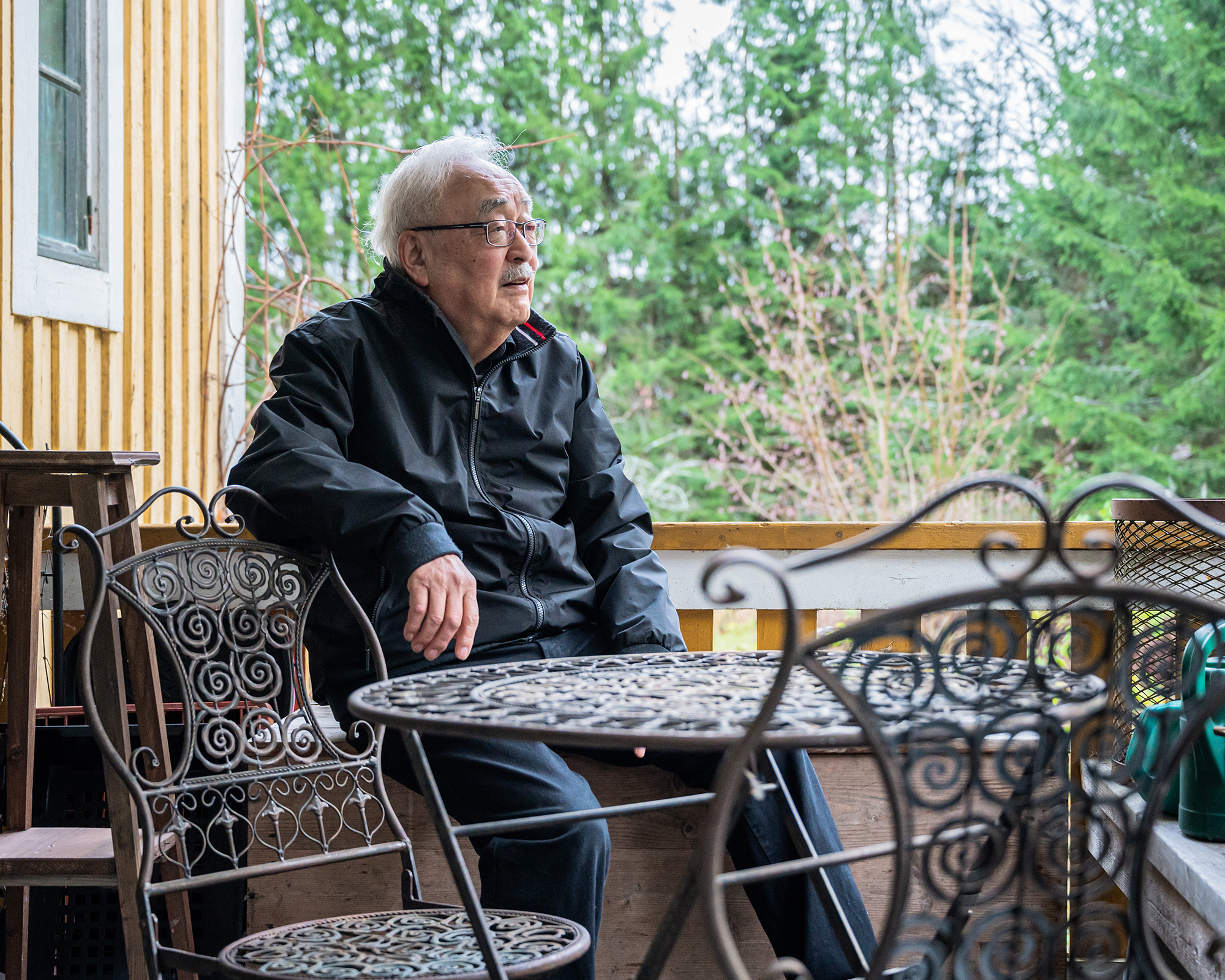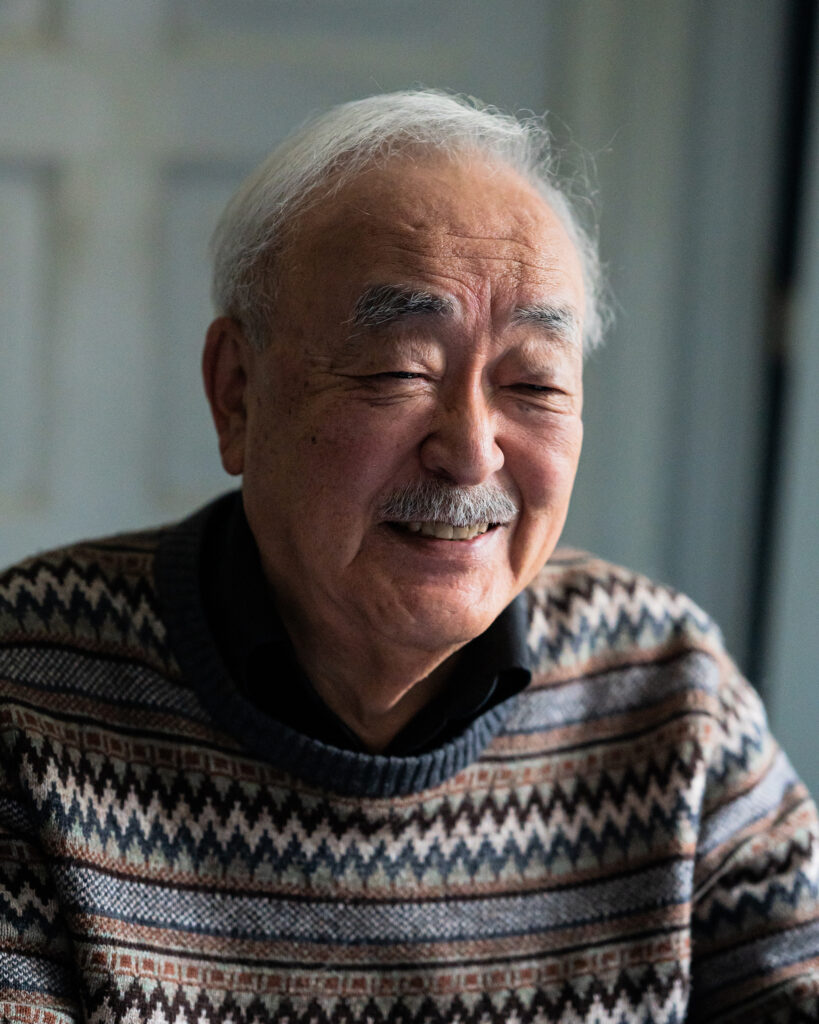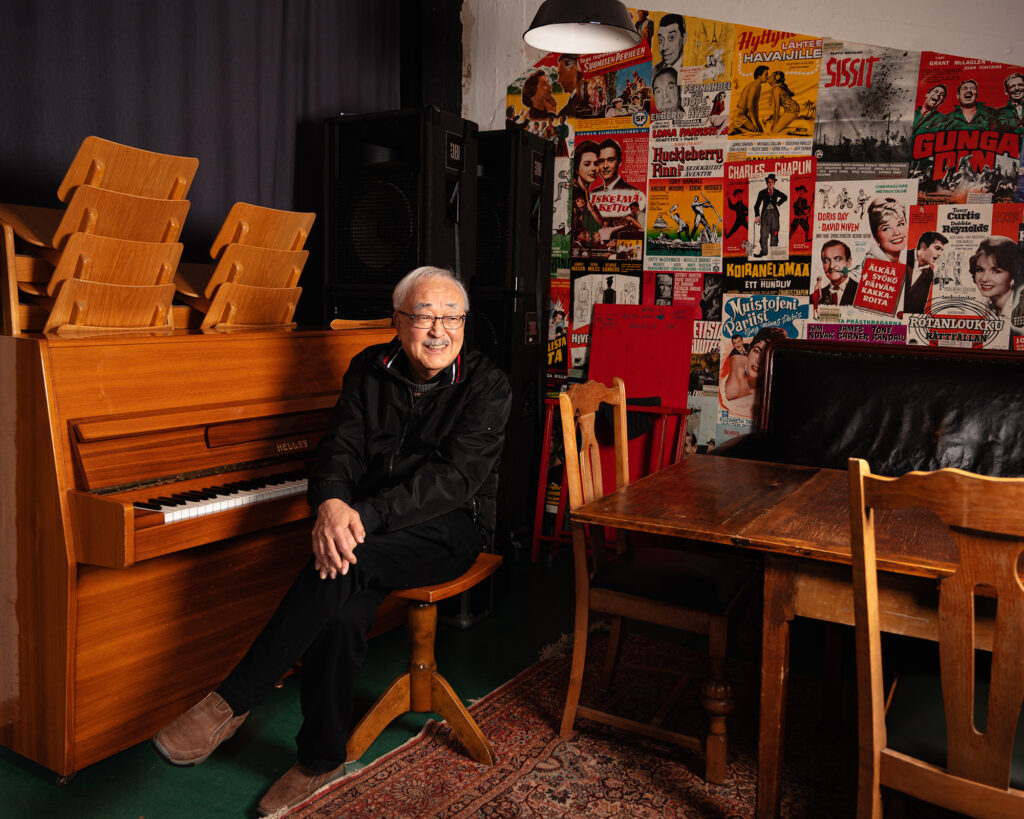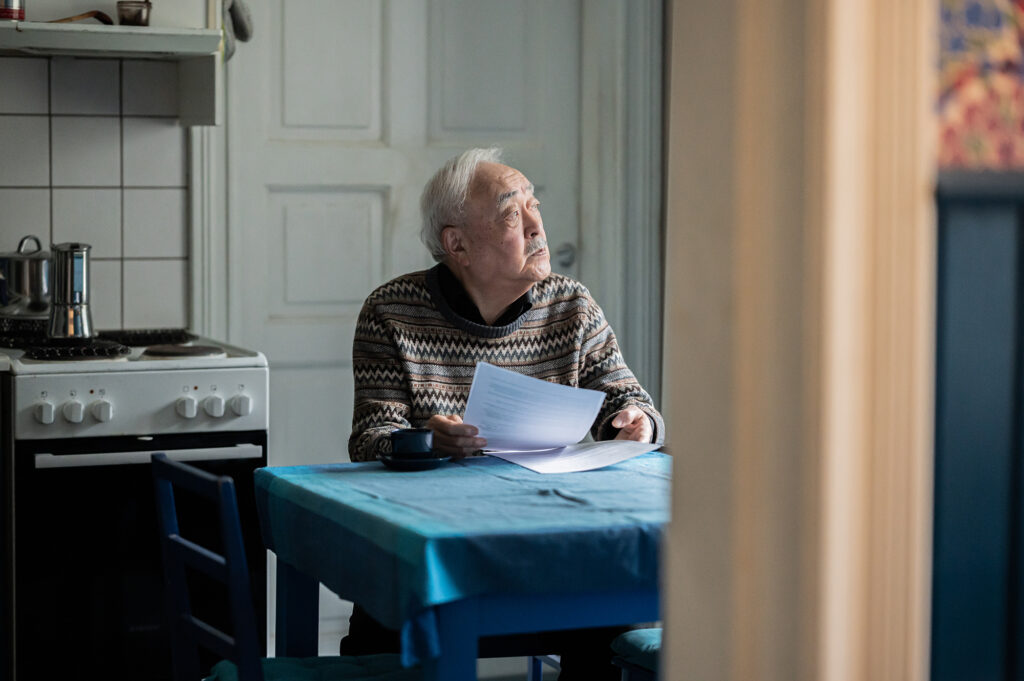“A place where I should have been born” – A Japanese singer has made a Finnish small town his home

Shinohara met film director Aki Kaurismäki at one of the outdoor parties in Karkkila. That meeting marked the beginning of a deep mutual respect and trust.
Oksana Chelysheva
Sercan Alkan
Published 14.11.2024 at 2:01
Toshitake Shinohara is nearly eighty but doesn’t look his age. His eyes are bright, and he has kept his laughter – and his singing. The Japanese born singer thinks there is a connection between singing and staying youthful.
“When I sing, I feel young,” he says, but adds that it is not the only reason to keep going. He recites Bob Dylan: “Come you masters of war, you that build the big guns…”
“At a time when wars spread, I have to sing antiwar songs.”
We are in Karkkila, a small town in Northern Uusimaa region with less than 9000 inhabitants. If tourists ever come here, its probably because of Aki Kaurismäki. The renowned director lives in Karkkila, and parts of his movies have also been filmed in here.
But if you ask the locals, there’s another resident who also would deserve to get his story told: Toshitake Shinohara.
Shinohara has been singing in four of Kaurismäki’s movies, as well as in Cinema Laika, a documentary by Croatian director Veljko Vidak. But for the residents of Karkkila, that is not the main point. They just have grown to value and respect Shinohara, whose person and music have become essential for the whole community.

Karkkila has been Shinohara’s home for nearly fifty years. His home is a yellow wooden house near the edge of the forest at the end of the street. There are no fences separating his house from those of his neighbours.
“In the summer, we get together in the yard, playing music,” he tells and adds: “and drinking, too.”
According to Shinohara, that is typical Karkkila. Neighbours gathering in parties and spending a lot of time with each other. The town is a tight-knit community.
Despite he tells the stories laughing, Shinohara can’t hide a hint of sadness in his voice.
“The house is too big for just me,” he says and gestures at the huge pile of neatly stacked firewood in his yard. “But I still like to chop it.”
How does a Japanese man end up in Karkkila? Through Moscow.
When Shinohara first arrived in Karkkila in 1976, he knew nothing about the town or Finland. The only thing was that Riitta was from here.
Shinohara had met her a couple years earlier in Moscow. The reason why a young man from Tokyo had ended up there, was Russian author Anton Chekhov.
In high school, Shinohara had read a Japanese translation of Ward No. 6 and found it captivating. Just before graduation, he met someone who was studying Russian at university.
“I asked him how it was, and the answer was simple: ‘It’s Chekhov”.
That was clear enough sign for Shinohara. He started Russian studies in Tokyo Sophia University. After graduating, Shinohara was employed by a publishing house that sent him to Moscow to refine his Russian.
There, Shinohara fell in love with a Finnish student. Soon, it was clear that the couple wanted to stay together after their time in Moscow would end.
“After returning to Japan, I worked in the publishing house for two years to fulfill my obligation,” he says and continues with a laugh, waving his hand.
“But then, arrivederci, Japan!”
A bartender who can sing and listen
Shinohara proposes to show his favourite spots of Karkkila. We start his small, blue car and start exploring the streets of Karkkila. After a while, we arrive to Shinohara’s first home in Finland.
It is a semi-detached house located in the outskirt stretch of the town. The houses are painted in warm colours that contrast with the dark green of the pine forest surrounding them.
“In Japan, homes like these would be for wealthy people, not working-class folks like many of my neighbours here”, he says.
In 1976 the houses were brand new. Shinohara remembers the initial bewilderment the forests surrounding the houses caused in him: “Is this really a town?”
The first two years in Finland Shinohara spent mostly with Riitta, speaking Russian or English. That wasn’t the way to get to know other people in Karkkila. Shinohara became discontent.
“I decided that I needed a job. I just couldn’t stay at home cooking any longer.”
That job was found at Pikkupässi, a landmark bar in Karkkila that still exists today. The owner was ready to hire a Japanese newcomer as a bartender.
Pikkupässi was a place for the locals to come and drink – but it was also a place where men could open up. Shinohara turned out to be a great listener.
“People shared their stories with me,” he recalls. “They’d tell me about their happy and sad days, their wives and girlfriends.”
Shinohara also brought with him to Pikkupässi his music. He had started to sing already as a schoolkid and had been singing and playing guitar in bands from the 1960s. In Pikkupässi, he performed music regularly, both at the bar and at the stage.
Shinohara ended up working at Pikkupässi for twenty-five years. He mixed cocktails, sang and connected with the people.
“It was more than a job. The most important thing was the acceptance I felt from the people.”
Singing his way to the movie screen
Karkkila is formed around a metal factory that was founded two hundred years ago. This means that there have always been a plenty of newcomers – workers from all over Finland and other countries.
“Being welcoming is part of our way of life”, Mika Lätti, co-founder and manager of Laika Kino and bar in Karkkila. “It makes getting to know different people much easier.”

Today, Karkkila is also home to many artists and creatives, and the welcoming spirit remains. According to Lätti, Karkkila is one of those places, where someone from outside gets a real change to become “one of us”.
That has been the case with Shinohara as well. He has a plenty of stories about gatherings with neighbours where they’d talk and sing together.
One particular story is about meeting Aki Kaurismäki. This is how Shinohara tells it:
“My son invited Aki and his wife to one of our outdoor parties in Karkkila. At the party, I started to sing, and Aki listened, his eyes closed.”
Suddenly, according to Shinohara, Kaurismäki stood up and hushed the crowd to silence. He asked from Shinohara about the song, told him to sing it again and then announced: “I have decided”.
The next day Shinohara was in the studio recording the song. Kaurismäki included it in the ending of La Vie de Bohème, a film he was working on at the time.
The film went on to win the Forum of New Cinema award at the Berlin International Film Festival in 1992. Shinohara recalls Kaurismäki telling him that critics had stressed his bold choice to end a Finnish film in French with a Finnish song.
“They didn’t even realize it was in Japanese,” he laughs.
A place to rest
We arrive at the gates of the new cemetery, one of two in Karkkila. This is where Riitta “awaits” Shinohara. But before we can get to her, Shinohara pauses and strikes up a brief conversation with a passer-by. After a while, another woman interrupts him to thank him for his songs.
This is how Shinohara’s relationship with the other Karkkila residents is. It is about sharing everyday moments as much as parties and other funny experiences. And it is about sharing the deepest and heaviest moments in one’s life.
A former neighbour, Susanna Pihlavisto, has told a story from last July, when Shinohara visited her mother at an elder care home.
Her mother and Shinohara had been friends for decades and sang together many times, but due to her mother’s fragile condition, that hadn’t happened in a long time. Until now.
“He started singing, and my mom joined him like before”, Pihlavisto says. “It was beautiful and sad, too, because we all knew it might have been her last song.”

At the graveyard gate, Shinohara has wished the people farewell. He can now show us the way inside. As we walk between the graves, there is time to talk about getting old with people who are dear for him leaving this world. On the way to Riita´s grave, he tells of their friends who are also in this cemetery.
When people reach Shinohara’s age, they tend to focus on themselves, reflect on the life that they have lived. He is no exception. He talks about raising a son, releasing three CD’s and translating three Finnish books into Japanese.
“I dream to live now just for myself”, he repeats several times.
At Riitta’s grave, Shinohara gently places his hand on the ground.
“I have found a place where I will rest”, he says. “In a place where I should have been born in.”
But not yet. Shinohara still has things to do. This year, he’s started a new band with Karkkila friends, reviving old American folk songs.
“I’m still Japanese. I can’t say ‘no’ to any challenge.”